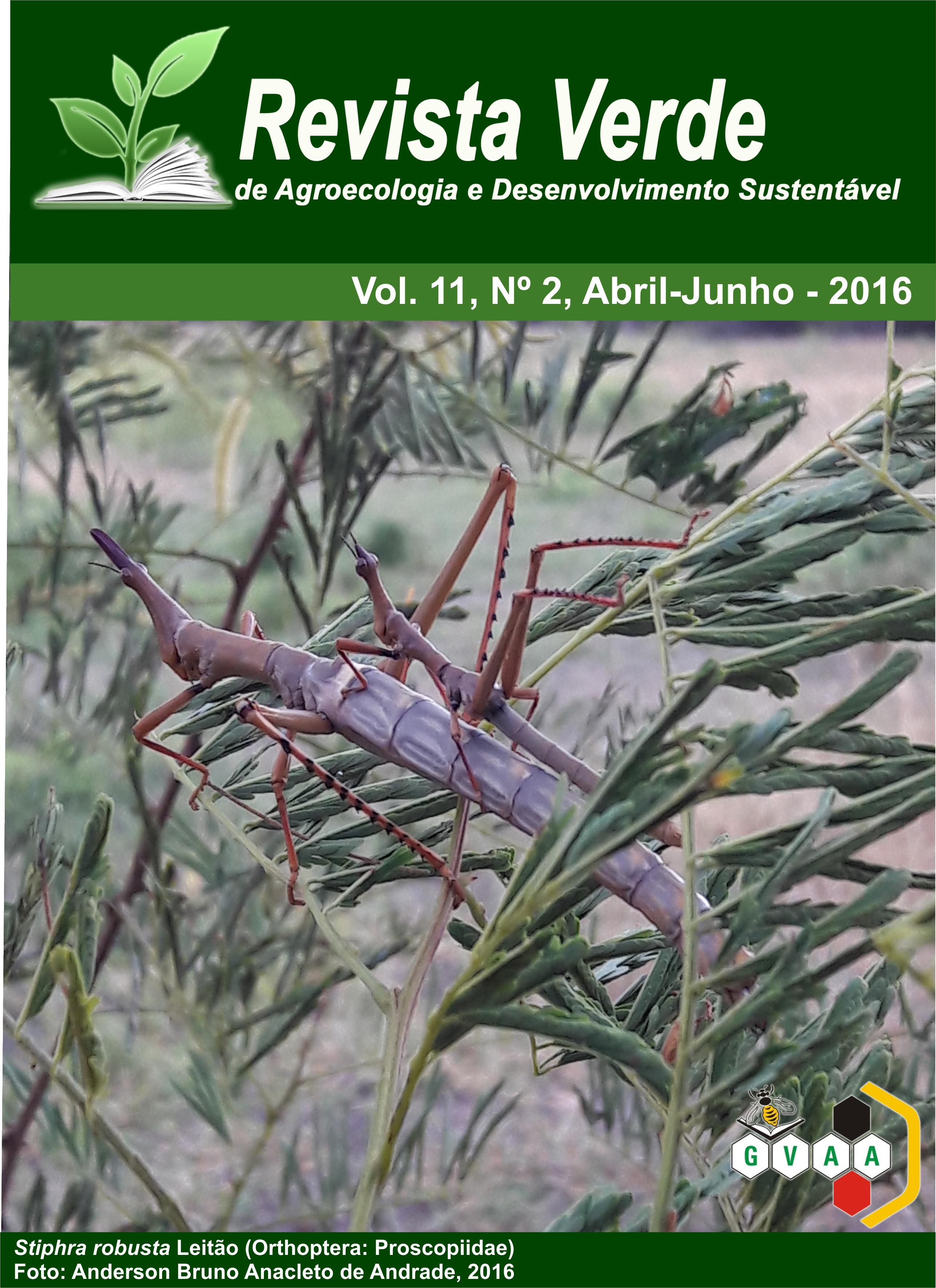Qualidade de águas residuárias e salobra utilizadas no cultivo hidropônico de três cultivares de alface crespa
DOI:
https://doi.org/10.18378/rvads.v11i2.4569Keywords:
reúso, nutrientes, salinidadeAbstract
O reúso de efluentes tratados não é uma prática nova, no entanto, há um interesse crescente em relação à necessidade de sua reutilização. Objetivou-se avaliar a caraterização das águas residuárias domestica e do reator UASB e água salobra de poço para o cultivo hidropônico de alface crespa. O experimento foi conduzido em ambiente protegido com sistema hidropônico. Delineamento experimental foi em blocos casualizados com esquema fatorial 7 x 3, três repetições sendo, 7 soluções hidropônicase três cultivares de alface. A parcela experimental, S1=solução de Furlani; S2=água residuária domestica; S3=água residuária domestica otimizada; S4=água de poço; S5=água de poço otimizada; S6=água residuária (UASB) e S7=água residuária (UASB) otimizada, subparcela três cultivares de alface. O pH das águas residuárias foram de 7,7 e 7,4 (Poço); 7,4 e 8,0 (Esgoto bruto) e, 7,2 e 8,2 (Extrabes). A (CE) foram 0,957 e 1,002 (Poço); 2,133 e 2,368 (Esgoto bruto) e (Extrabes) 2,502 e 2,4 09 dS m-1. O uso de soluções minerais nutritivas utilizando água residuária é viável quando utilizado em sistemas hidropônicos, sendo indicado para principalmente para região do semiárido brasileiro e quando se faz uso de água de irrigação de qualidade inferior na produção de hortaliças.
Quality of wastewater and brackish water used in the hydroponic cultivation of three varieties of curly lettuce
Abstract: The reuse of treated wastewater is not a new practice, however, there is a growing interest in the need for re-use. The objective was to evaluate the Characterisation of domestic wastewater and UASB and brackish well for hydroponic lettuce. The experiment was conducted in a protected environment with hydroponically. Experimental design was a randomized block with factorial 7 x 3, three replications and 7 hydroponic solutions and three lettuce cultivars. The experimental portion, S1 = Furlani solution; S2 = domestic wastewater; S3 = domestica optimized wastewater; S4 = well water; S5 = optimized well water; S6 = wastewater (UASB) and S7 = wastewater (UASB) optimized subplot three lettuce cultivars. The pH of wastewater were 7.7 and 7.4 (well); 7.4 and 8.0 (raw sewage) and 7.2 and 8.2 (Extrabes). The (EC) were 0.957 and 1.002 (Wells); 2,133 and 2,368 (raw sewage) and (Extrabes) 2,502 09 and 2.4 dS m-1. The use of nutritional mineral solutions using wastewater is feasible when used in hydroponic systems, is indicated for mainly for the Brazilian semi-arid region and when it makes use of water of poor quality irrigation in vegetable production.











